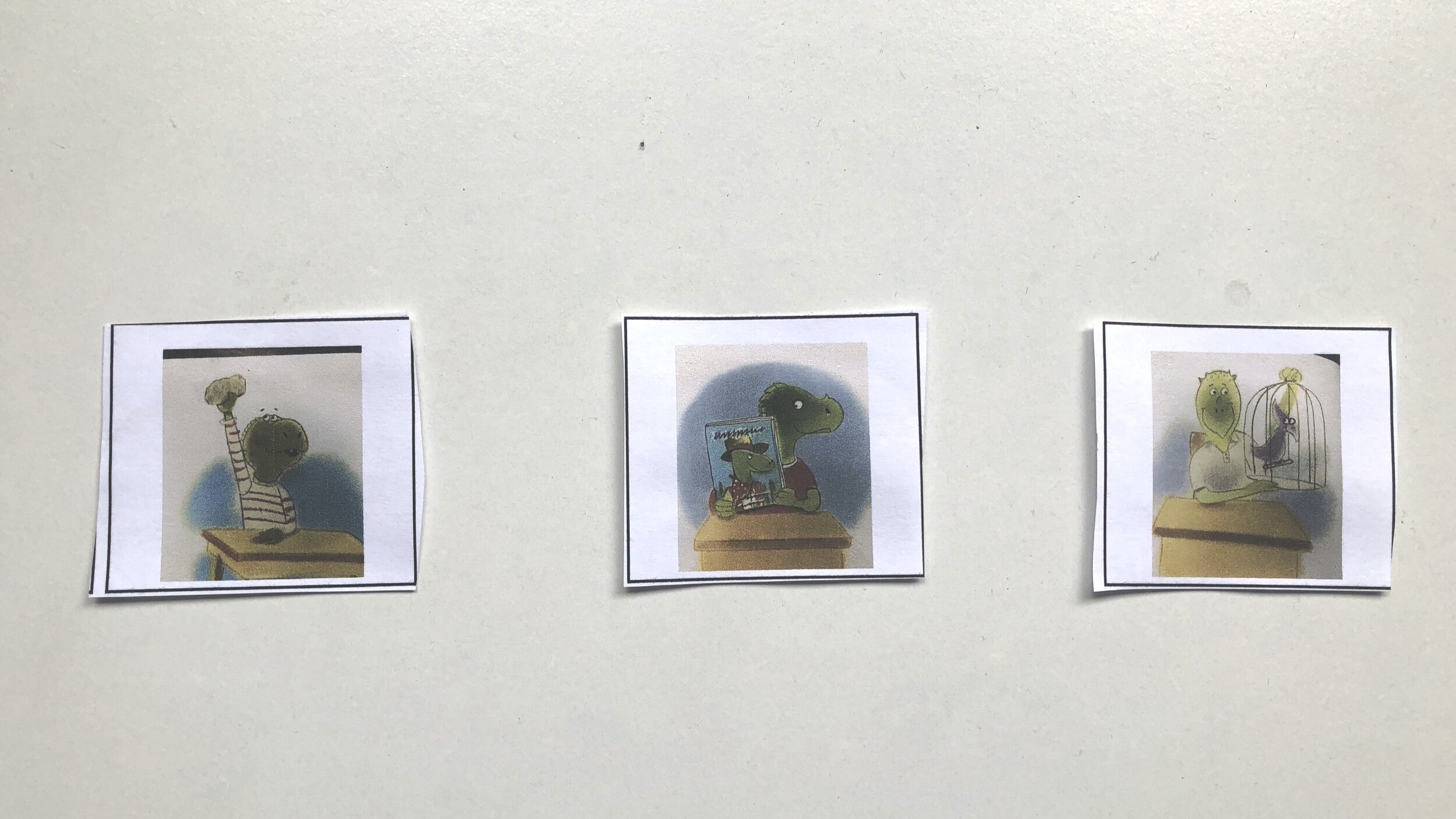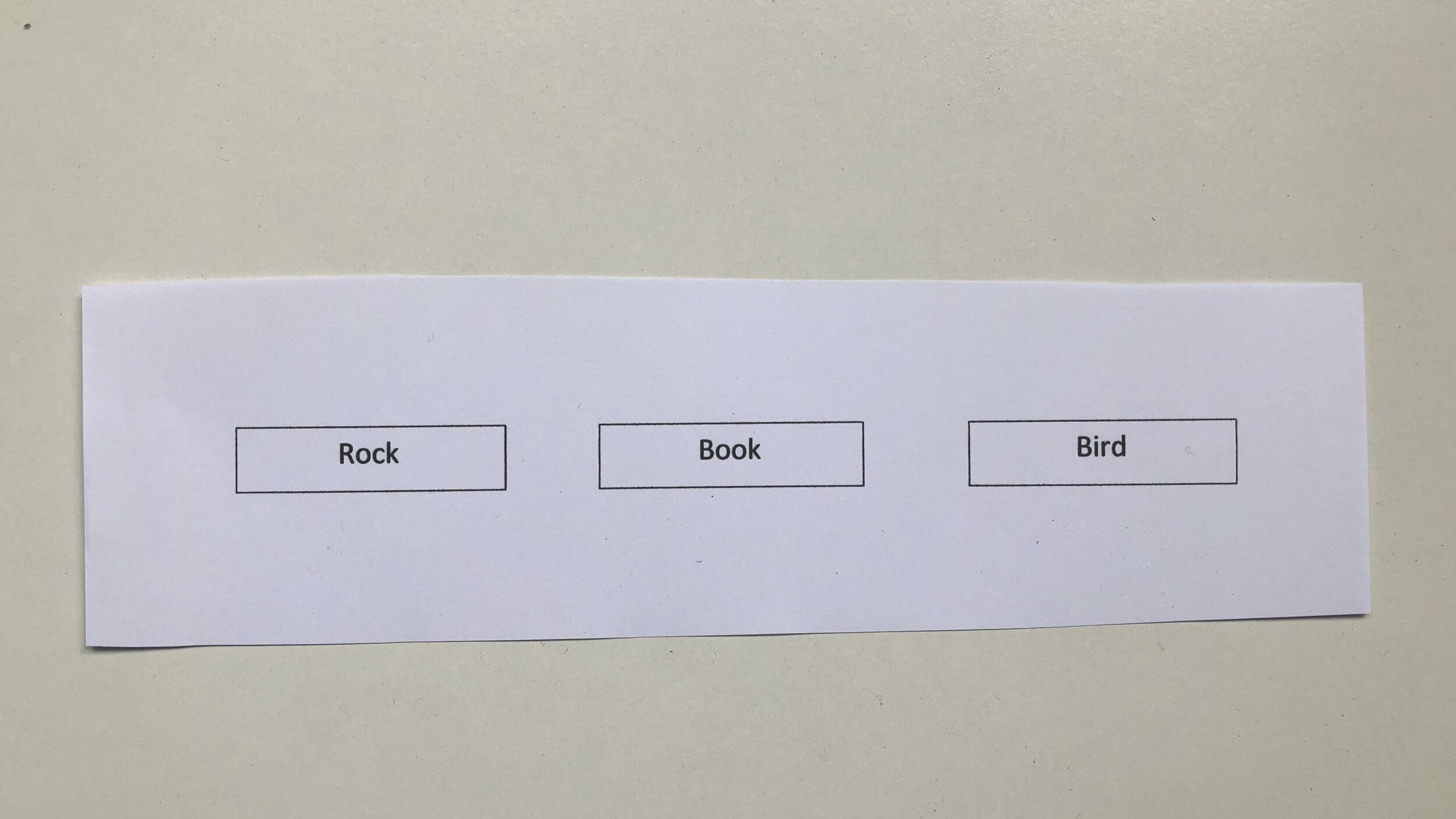“Text comprehension is a complex activity that can be overwhelming for students with cognitive disabilities. We can’t just test comprehension, we must teach it.” – Center for Literacy and Disability Studies
Comprehension is a crucial skill that is targeted in all classrooms. Answering -WH questions is key for students to be able to infer and understand all aspects of what they are reading. Simply asking a child “Who was in the story?”, “What happened in the book?”, “Where did the story take place?” is not enough. Teachers need to provide multiple ways for students to demonstrate understanding.
Using the book “Show and Tell”, I will demonstrate a variety of ways to assess the students given the question “What did the dinosaur show first?”
USE ACTUAL OBJECTS
Using actual objects during a guided reading activity provides a multi-sensory approach to learning. It allows children to explore and engage in a hands on way. The use of actual objects is a strong way to promote engagement, as well as understanding of what is being read by connecting text to real life objects.
USE VISUALS FROM WITHIN THE TEXT
Providing students with actual visuals from within the text give students a concrete representation of what they just read. Children retain information through pictures and visuals more than through text. Providing visuals from within the text helps students with recall and comprehension.
USE PICTURES
Take it one step further. Provide students with visual supports using real life items, internet pictures, clipart, etc. Visuals are still used to assist with recall and comprehension, but also shows that the child is able to generalize and make connections.
ELIMINATE VISUALS
Next step- eliminate visual cues! By eliminating visual supports and only giving the student 3 options, the student no longer has a picture or visual to assist in recalling what was read. Once the student is able to recognize the words without the visuals it shows they have a deeper knowledge of comprehension.
EXPRESSIVE RESPONSE
Simply asking a student “What happened first?” and eliminating all supports is the most challenging way to assess a child.





